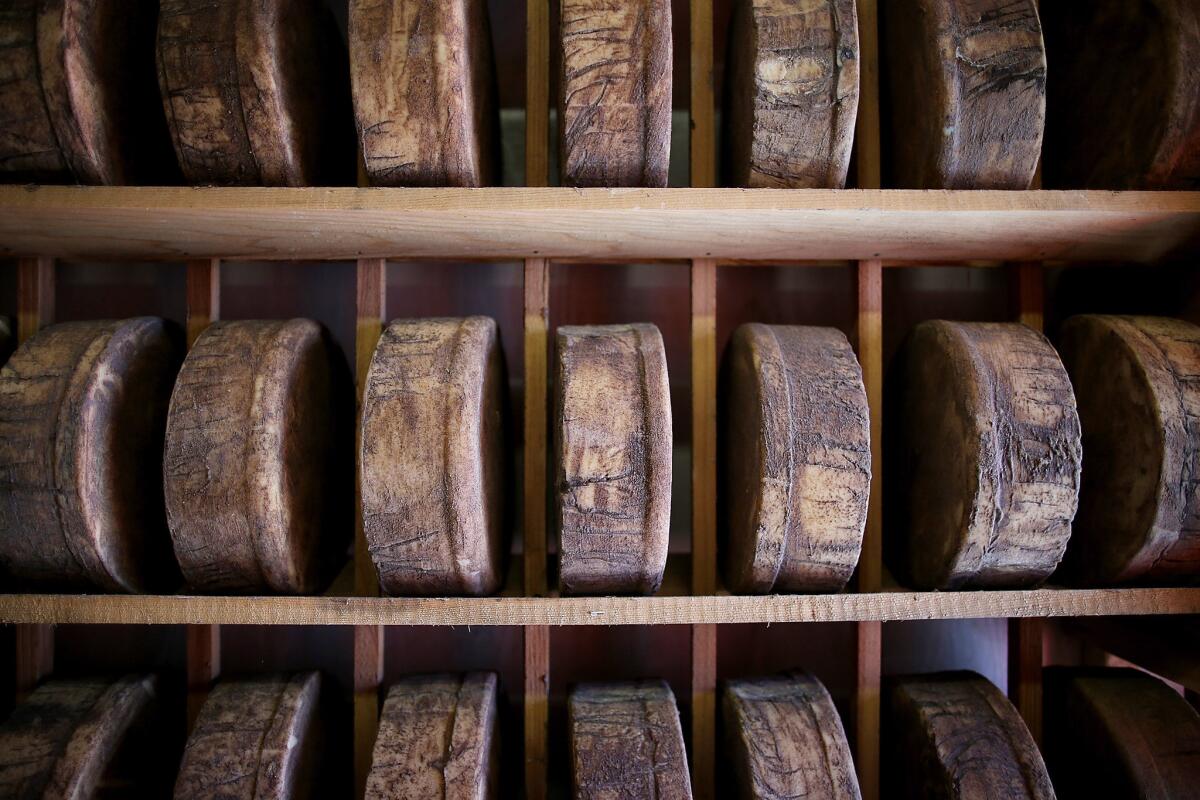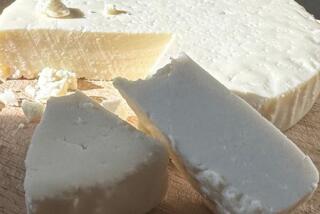Wood-aged cheese: How science slices the debate over bacteria

So what’s the big stink over wood-aged cheese anyway? Is it deadly or just delicious?
Artisanal cheese-makers raised a fuss recently when an FDA official suggested that wooden cheese shelves posed a public health risk because they were not “adequately cleanable,” and could therefore harbor dangerous bacteria.
While the FDA now insists the official’s concerns were not part of an official policy statement, the whole bacteria topic has been grating the nerves of foodies ever since.
So where exactly does science come down on the issue?
First of all, there’s no getting away from bacteria.
Aside from a few cheeses like paneer and some mozzarella, which are curdled with lemon juice, vinegar or other acids, most cheeses owe their very existence to humble bacteria.
Cheese-making begins when a common class of microbes called lactic acid bacteria dig in for a meal.
“They are there for the same reasons you eat cheese,” said Martin Wiedmann, a food scientist at Cornell University in New York.
They devour the protein, fat, and sugar — also known as lactose — found in dairy. In the process, they acidify the milk, giving cheese its tart zing, and produce diacetyl, a natural byproduct of fermentation responsible for cheese’s buttery appeal.
The bacteria also prime the cheese to clump into curds when the cheesemaker adds a coagulating enzyme like rennet.
But that’s not the whole story when it comes to artisanal cheeses.
“The microbes are everything,” said Lisbeth Goddik, a professor of Food Science and Technology at Oregon State University who works extensively with small cheesemakers.
Sophisticated cheeses contain up to a dozen different strains of bacteria that produce exotic combinations of flavors, which evolve as the cheese ages. The initial lactic acid strains die off and decay, releasing enzymes during the part of the process we euphemistically call “ripening,” while latent microbes bloom and new bacteria and molds take hold on the surface.
“But neither the good ones or the bad ones care about making cheese for you,” Wiedmann said. For that matter, until recently, humans didn’t care much either. They simply needed a way to preserve milk so that it didn’t spoil. And historically, recruiting bacteria for the task was easy; they were everywhere. In the milk, on the animals, caked to utensils, clinging to the walls of the caves where cheese aged.
More recently, as cheesemaking has transformed from necessity to art, producers learned to employ specific cultures for desired results. But bacteria are still everywhere, and sometimes the bad ones find their way into cheese uninvited.
Along with salmonella and E. coli, a class of bacteria called listeria poses the greatest danger. The microbes look like pill capsules with whiskers, and they persist even in cool temperatures that keep most bacterial growth at bay.
Wiedmann says the bacteria is alarmingly common — one in five samples taken from cities, homes and the environment test positive. Listeria crops up most often in soft cheeses like Camembert and Brie, which have lower acidity and plenty of moisture. It is fatal in about 20% of cases.
“It is a real issue and it cannot be taken lightly,” Wiedmann said. “The FDA is absolutely 100% right about making sure we control listeria in cheeses.”
But are wooden shelves the culprit?
Unfortunately, the science doesn’t paint a very clear picture. There is some evidence that beneficial biofilms — vast colonies of bacteria that cover the surface — really do form and can prevent the growth of pathogens in some cases. But wood shelves have also tested positive for listeria.
One explanation for these differing results, Wiedmann suggests, is that wood as a category is simply too broad. The type, condition, and cleaning routine of the shelves matter immensely, so a blanket ban doesn’t really make sense.
Another sticking point is that it’s extremely hard — if not impossible — to trace a particular listeria outbreak back to something as specific as shelves, experts say.
“We did a study on an artisanal cheesery and noticed that the same bugs on the surface of the cheese were the same bugs on the other surfaces within the dairy, including the wood boards,” said David Mills, a microbiologist at UC Davis.
Fortunately, they were good guys, but the point is clear: Dairies teem with microbes.
Wiedmann cites the hollow rollers used to manufacture sliced cheese as a possible hiding place for pathogens. In reality, listeria problems stretch far beyond the wooden shelves of artisanal dairies; the FDA closed a queso fresco factory in Kenton, Del., in March after its products sickened eight people, one of whom died.
“Unfortunately, the good bacteria and the bad bacteria don’t come with procedures where you can keep the good ones and get rid of the bad,” Wiedmann said.
So what to do?
“It’s not just about wooden boards or one specific thing,” Wiedmann said. “It’s about a comprehensive plan to help all food processors, including small artisan cheese producers, to have procedures in place to find listeria anywhere in their environment and deal with it.”
He advocates clear protocols, such as regularly heating the wood to high temperatures to kill bacteria and developing a system for deciding when to retire funky boards.
“In Europe, they tend to clean the shelves well and then they reinoculate them,” Goddik said. “That is well researched, that’s not just an old wives’ tale.” This accomplishes the same thing as pasteurizing milk and then adding back the bacteria you want: it helps make a consistent product. Which is a good thing, right?
“Artisans don’t necessarily want to have the same cheese each time,” Goddik said. “They want cheese to be a product of where it’s from,” a concept the wine industry calls terroir.
This explains why many artisans swear by raw milk — which harbors a diverse, flavorful, but potentially harmful suite of microbial flora — and why they so dearly love wood shelves.
And it turns out consumers love funky artisan cheeses just as much.
The issue of demand, while not scientific, is actually a fundamental variable in the artisan cheese equation. As a case in point, Goddik and her colleagues conducted a study at a cheese festival in Portland, Ore., back in 2011 in which they offered people raw and pasteurized versions of the same cheeses. When the consumers knew which cheese was raw, they preferred it. When they did not, they liked them both the same.
“The kinds of consumers who buy artisan cheese have a preference for raw milk cheeses,” Goddik said. This reality is not lost on artisanal producers, who operate with high input costs and premium prices. The challenge is how cheesemakers can meet this demand while tamping down the threat of listeria forever.
For all things science, follow me @ScienceJulia







